Byton reveals the serial M-Byte at the IAA
At the IAA, Byton presented the series version of the M-Byte. The first deliveries to customers in China are slightly behind schedule and will begin in mid-2020. In Europe and North America, the company’s debut current will be launched in 2021.
Byton also finally unveiled the M-Byte’s technical data for the IAA: The basic version of the M-Byte will have an output of 200 kW, a battery capacity of 72 kWh and a range of up to 360 km (WLTP). In the higher-value all-wheel drive variant, Byton speaks of 300 kW power, 95 kWh capacity and a range of up to 435 km (WLTP). The charging standard will vary depending on the region, i.e. the company will rely on both GB/T (China) and CCS (Europe and North America). In terms of charging capacity, the Chinese promise up to 150 kW (DC) or between 3.7 and 22 kW (AC).
Byton also commented on the price at the Frankfurt car show: According to their representatives, the electric SUV will cost 45,000 euros or more excluding VAT. Currently, more than 50,000 reservations are recorded worldwide, with reservations from Europe accounting for a “significant proportion”, Byton said in a press release. Advance orders with advance payments will be activated in Europe and North America in the coming year. The market launch will therefore be postponed slightly: China had previously talked of the end of 2019 and overseas of the second half of 2020. So the figures for mid-2020 (China) and 2021 (Europe and North America) are now on the books.
As with the pre-series vehicle, Byton’s production vehicle evokes the credo that mobility should increasingly become a digitally networked experience. For example, the communication includes the slogan “Prioritizing data power over horsepower”. Accordingly, the M-Byte is to score above all as an intelligent, networked electric car that can shine with a view to shared mobility and – in the future – autonomous driving. This is particularly evident in the interior: the M byte retains the 48-inch cockpit display already presented in the pre-series car, which extends from A-pillar to A-pillar over the entire front and can be played with different contents in parallel in the so-called split-screen mode. This is complemented by 7- and 8-inch driver and passenger tablets. In addition, the front seats can be turned inwards to “create a communicative space for the passengers”.
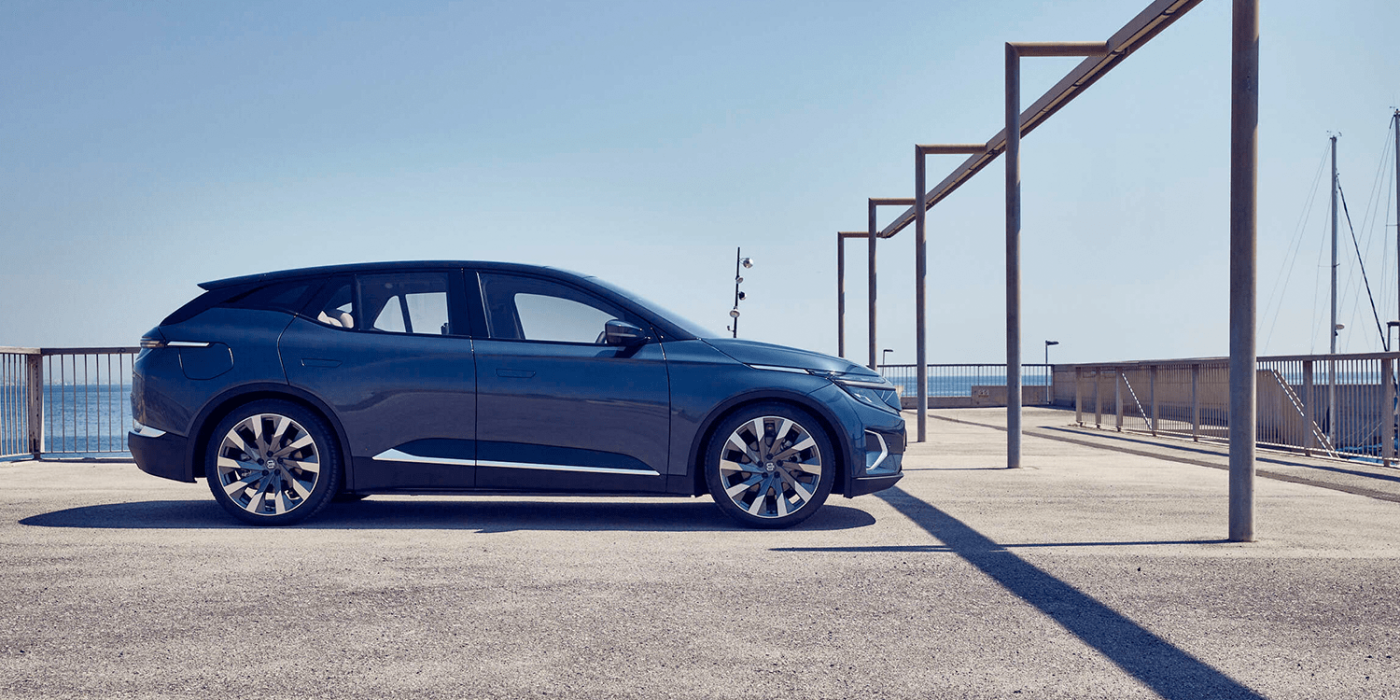
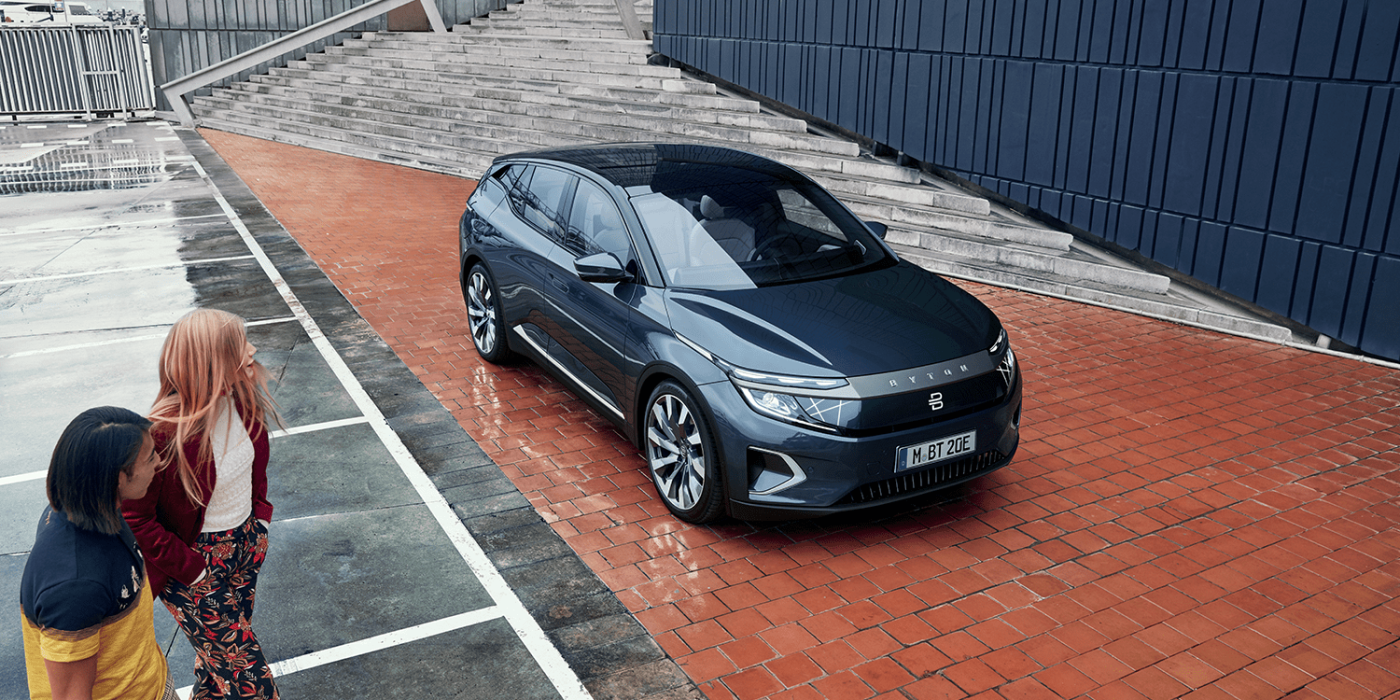
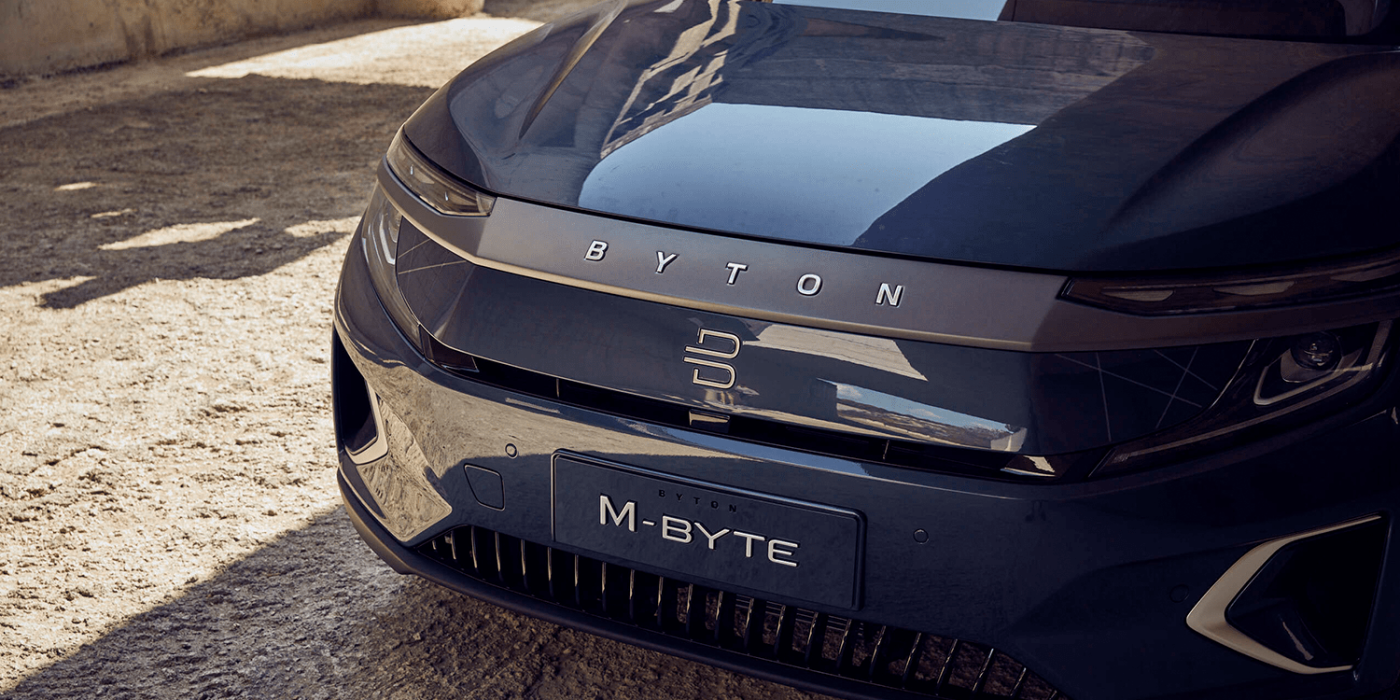
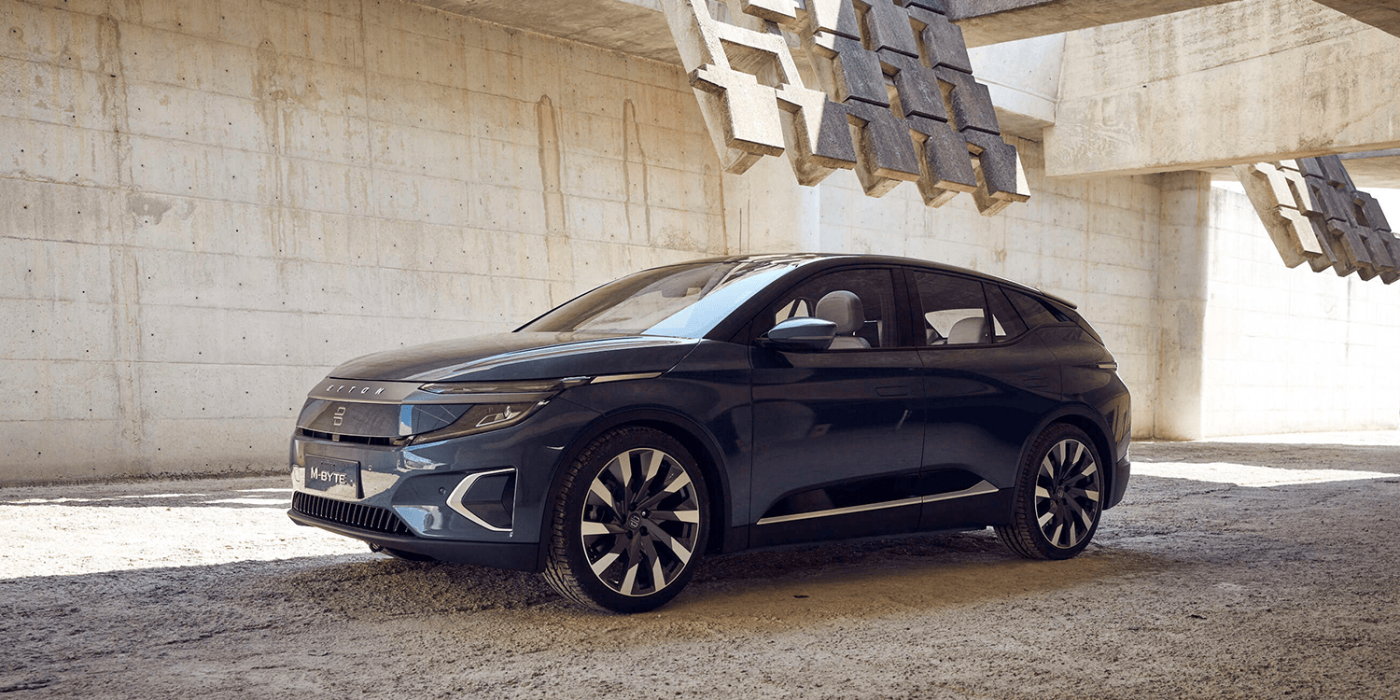
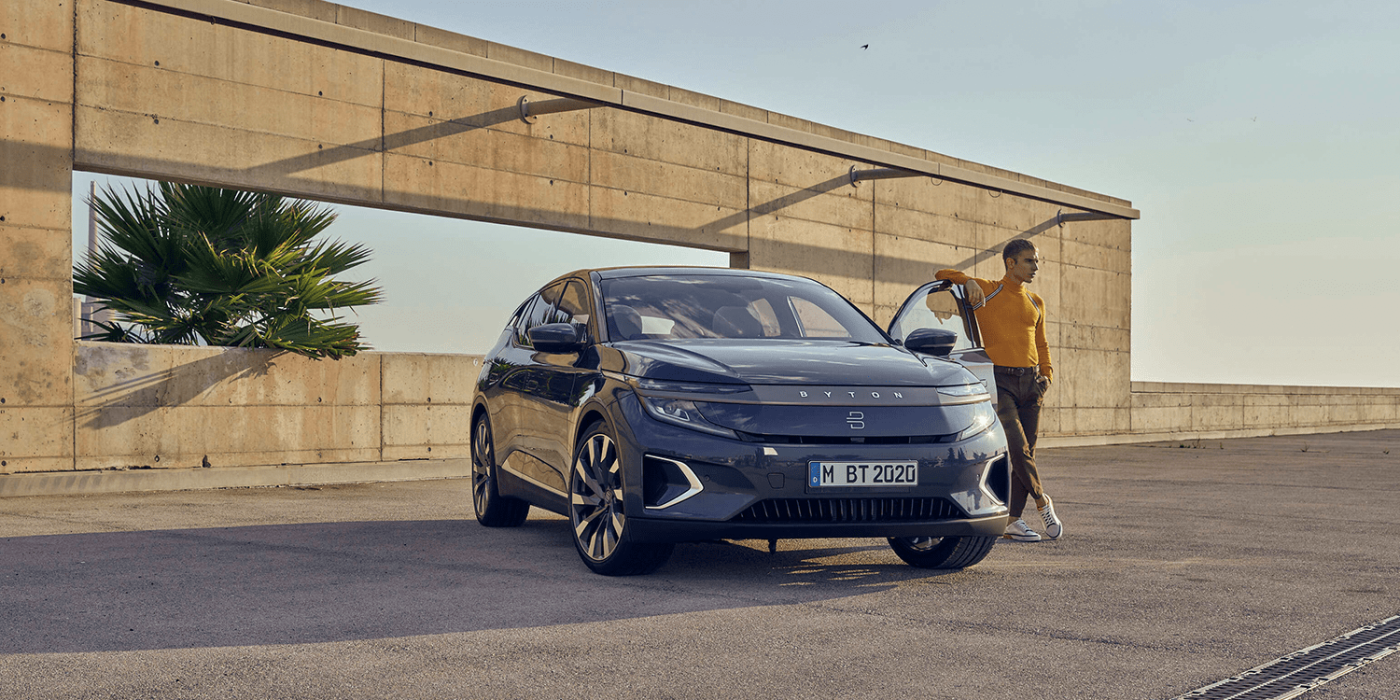
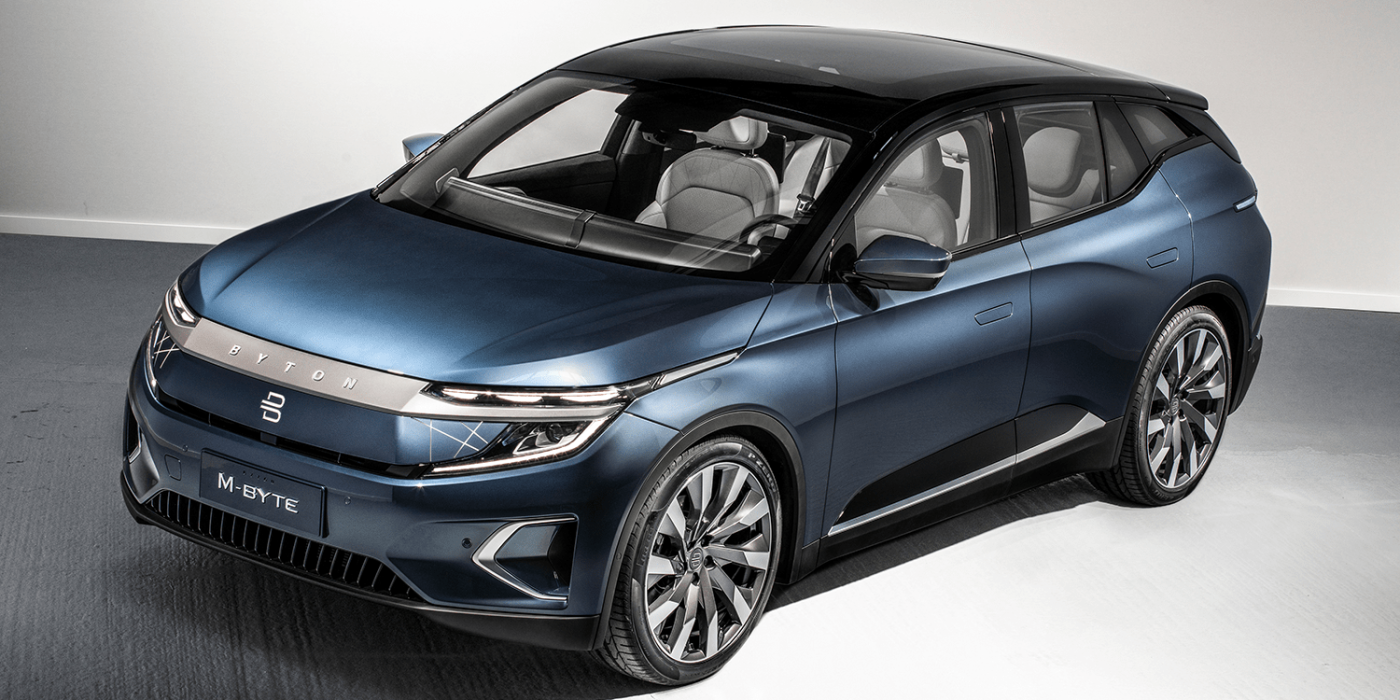
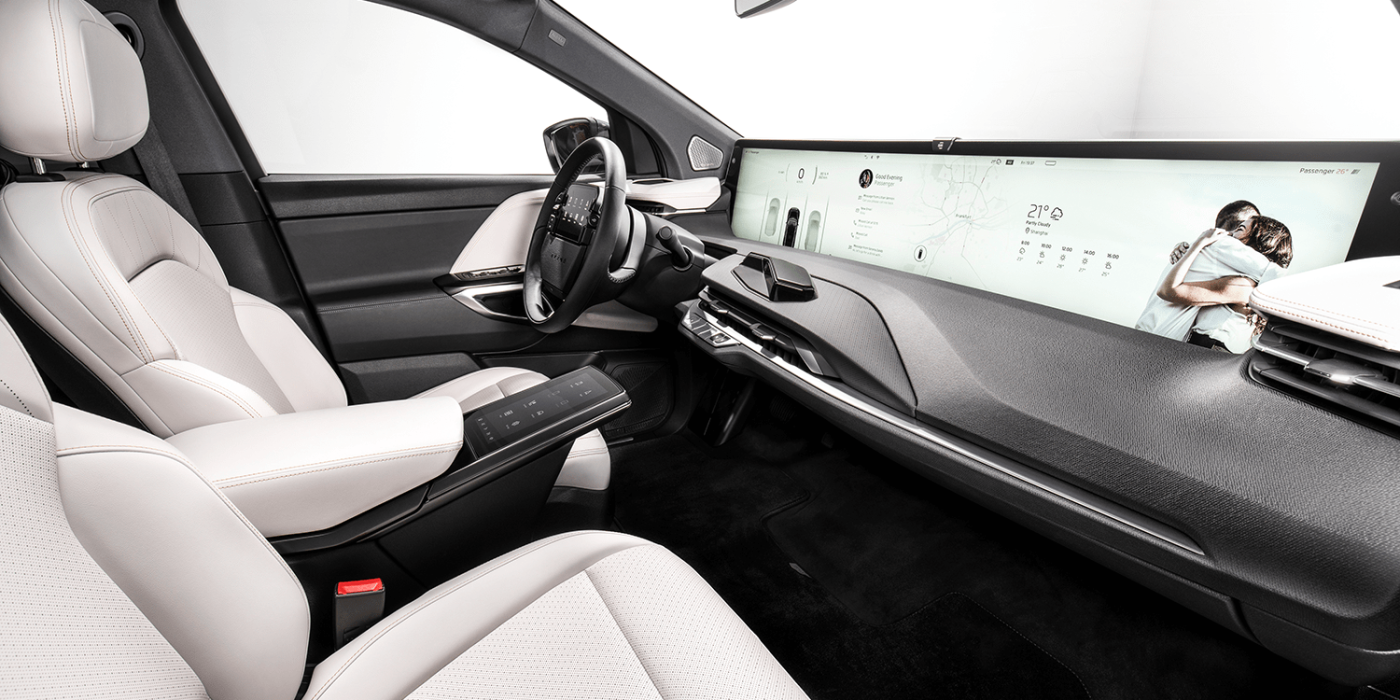
Externally, Byton relies on a low roof line, a slim silhouette and correspondingly competitive aerodynamic values. Lighting elements also transform the front and rear of the car into an “external user interface”, as the company puts it. In the era of autonomous driving, this is intended to serve, among other things, for communication with the outside world.
Byton is currently testing around 100 prototypes of the electric SUV. At the same time, the company is pushing ahead with the completion of its first own production facility in Nanjing. As early as September, an R&D center is to be opened at the site, which, in addition to the usual testing procedures, will also be capable of testing innovative connectivity features and advanced IT technology.
The plant itself has machines from the German specialists Kuka and Dürr, among others. “It is in no way inferior to the German premium manufacturers,” Byton CEO Daniel Kirchert recently stated in an interview. Up to 300,000 electric cars per year will leave the site after the start-up phase. The production site covers about 800,000 square meters, the investment amounts to about 1.5 billion dollars according to Byton.
It’s a good thing that the third financing round with a volume of 500 million dollars is “about to be concluded,” as Byton writes. The main investors are China’s state-owned carmaker FAW and the Nanjing City Council’s industrial fund. Byton has been in close contact with FAW for some time now. In October 2018, the electric car company took over the weakening FAW subsidiary Tianjin Huali and thus secured a production license for the series production of electric cars in China. Half a year earlier, FAW had already pumped around 260 million dollars into Byton, among other things in order to trim its own Hongqi brand more in the direction of electromobility thanks to Byton’s technology. At the same time, the two companies also agreed on intensive cooperation in the procurement of parts and in research and development for autonomous vehicles.
Apart from that, the year has been eventful for Byton. Already at the beginning of the year, there was a change in the company’s management: Co-founder Carsten Breitfeld was appointed to the Supervisory Board as Chairman of the Board, while Kirchert as CEO leads the day-to-day business. The former BMW i8 project manager Breitfeld was not happy with his new role. He left Byton in April. A few days ago it became known that he is now working for Faraday Future.
Source: Press Release via Email




0 Comments